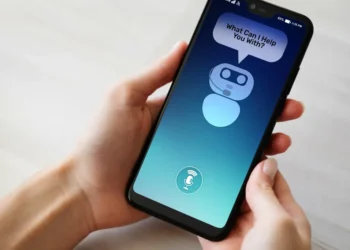For years, American high school students have felt the societal pressure to attend college.
By the millions, they register for college classes without any idea about who they are or what they want to do with their lives. Sure, most young people haven’t figured it out yet, but racking up thousands of dollars in student debt is an expensive form of soul-searching that leaves college dropouts (and even some graduates) saddled with loan payments they can’t afford to pay back.
For too long, there’s been a perception being pushed that choosing a blue-collar career over a college degree is the wrong choice. Instead, students have been immersed in STEM courses and programs in high school and college with the promise that a background in coding or similar fields will land them a dream job.
Now, many of these STEM students are finding that artificial intelligence (AI) has taken the very jobs for which they had been trained. As Harris Rigby writes at Not the Bee, “It’s the ultimate irony that the desire to be modern, cutting edge, and to set kids up for the future has only resulted in them being left behind and in tremendous debt because no school advisor saw technology advancing beyond what it was when they started this push.” Rigby adds, “We told a generation of children that computer programming was THE thing that mattered most and by the time they got out of college all of those jobs were taken by AI.”
Although the impact of AI is only beginning to be felt in the workplace, in May, New York Times technology columnist Kevin Roose noted, “This month, millions of young people will graduate from college and look for work in industries that have little use for their skills, view them as expensive and expendable, and are rapidly phasing out their jobs in favor of artificial intelligence.” Roose reports that “what’s showing up in the economic data is only the tip of the iceberg. In interview after interview, I’m hearing that firms are making rapid progress toward automating entry-level work, and that A.I. companies are racing to build ‘virtual workers’ that can replace junior employees at a fraction of the cost. Corporate attitudes toward automation are changing, too — some firms have encouraged managers to become ‘A.I.-first,’ testing whether a given task can be done by A.I. before hiring a human to do it.”
The Georgetown University Center on Education and the Workforce found that nearly a third of annual job openings through 2031 will require some credentials but no college degree. STEM jobs will still be plentiful, and there will be many graduates ready to fill those jobs. However, AI is increasingly performing the same work more efficiently and at a lower cost. “A McKinsey report projects that by 2030, 30% of current U.S. jobs could be automated, with 60% significantly altered by AI tools,” according to Forbes. “Goldman Sachs predicts up that to 50% of jobs could be fully automated by 2045, driven by generative AI and robotics.”
It’s no surprise, then, that many high school seniors no longer see a college degree as their best path forward.
A survey conducted by the nonprofit American Student Assistance (ASA) found that 45% of respondents said a two- or four-year college is their most likely choice after high school, which is down from 78% in 2018. Meanwhile, 37% said they are considering trade or technical schools, apprenticeships, and tech programs — a significant increase from 11% in 2018.
Internships are another increasingly appealing way to prepare for the workforce without earning a degree or certification. “Students who participated in high school internships say businesses are making a difference,” the ASA reports. “According to ASA’s 2023 survey of 500 former high school interns, now aged 35-40, 87% said their internship experience helped them understand the type of career they want, and more than half said their internship improved their skills.” Furthermore, “Businesses also recognize that high school internships can help fill the talent pipeline. In an era where many industries are facing severe talent shortages and organizations are looking to diversify their workforce, exposing youth to work-based learning opportunities can pay dividends in the future.”
Skilled trades are not for everyone, but according to CNBC, more young people are looking into skilled trade jobs such as plumbers, electricians, and welders. CNBC adds, “Many Gen Zers are finding fulfillment, stability, and, in many cases, financial security by getting into skilled trades.”
Current college students shouldn’t fear what AI might do to their future careers, but the powerful reality of AI and its impact on the workforce cannot be underestimated. Dario Amodei, CEO of Anthropic, told Axios that “AI could wipe out half of all entry-level white-collar jobs — and spike unemployment to 10-20% in the next one to five years,” and that “AI companies and government jobs need to stop ‘sugar-coating’ what’s coming: the possible mass-elimination of jobs across technology, finance, law, consulting and other white-collar professions, especially entry-level gigs.” Axios adds, “Imagine an agent writing the code to power your technology, or handle finance frameworks and analysis, or customer support, or marketing, or copy editing, or content distribution, or research. The possibilities are endless — and not remotely fantastical. Many of these agents are already operating inside companies, and many more are in fast production.”
None of this is to say that current students studying STEM in high school or college should abandon their plans and start looking for blue-collar jobs. But they should be aware of the rapidly changing nature of AI and how it could impact their future.
















